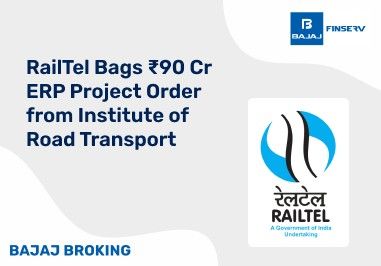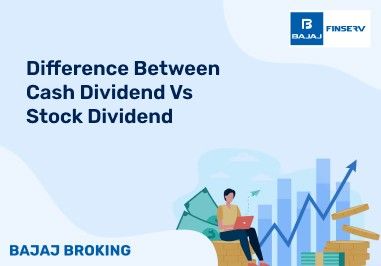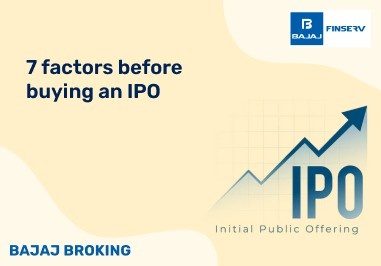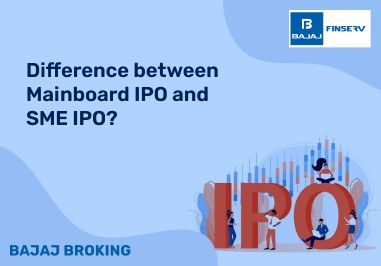move helps it raise funds for business growth. But not all IPOs are the same. Some companies go for a mainboard IPO, while others choose an SME IPO. Understanding the mainboard IPO vs SME IPO framework is important for retail and institutional investors alike.
The key difference lies in the size of the issue. A mainboard IPO suits large businesses, while an SME IPO is ideal for small and medium enterprises. Besides this, there are many other differences. These include capital size, number of investors, regulatory rules, and more. You need to know how mainboard IPO vs SME IPO differ before investing.
When comparing SME IPO vs mainboard IPO, issue size and listing conditions stand out. Liquidity, investor access, and funding potential also vary. The more you explore mainboard IPO vs SME IPO, the better your chances of finding the right fit. So if you're wondering whether SME IPO vs mainboard IPO fits your goals better, this article will give you clarity.
Let’s explore the mainboard IPO vs SME IPO comparison in detail to help you understand which type fits your investment goals.
What is a mainboard IPO?
A mainboard IPO is the route taken by large, well-established companies to raise funding by selling shares to the public for the first time. These IPOs are listed on the main exchanges like NSE and BSE and involve strict regulations and high eligibility criteria. To qualify for a mainboard IPO, a company must have a post-issue paid-up capital of at least ₹10 crore. These firms are usually backed by strong financials, sound corporate governance, and a proven track record. The listing offers them access to a wide investor base, including retail investors, institutional buyers, and foreign portfolio investors. Shares of such companies are traded actively, providing better liquidity. The process requires detailed disclosures, regulatory compliance, and strict scrutiny by market authorities.
While the approval timeline is longer and costs are higher, the benefits often outweigh the challenges. You, as an investor, can expect better transparency, market visibility, and greater opportunities when investing in a mainboard IPO. These IPOs generally appeal to those seeking stable investments with relatively lower risk. If a company aims for expansion and visibility on a national or global scale, transitioning from a private entity to a public one via a mainboard IPO is often the ideal step. This comparison of mainboard IPO vs SME IPO becomes vital when deciding where to invest. When evaluating SME IPO vs mainboard IPO, regulatory complexity and listing cost can also affect the choice.
What is an SME IPO?
Now let’s understand an SME IPO. This type of IPO is specifically designed for small and medium enterprises and businesses that want to raise funding by offering their shares for sale to the general public for the first time. These companies are typically at an early stage or operate within niche sectors. The shares are listed on specialised platforms like NSE Emerge or BSE SME. To qualify for an SME IPO, the post-issue paid-up capital must not exceed ₹25 crore. Compared to mainboard IPO options, the regulatory framework for SME IPO is more flexible, with simplified compliance requirements. These IPOs allow smaller firms to access capital markets, boost credibility, and improve market reach. However, they often carry higher risks due to limited financial history, reduced liquidity, and smaller investor attention. The minimum investment size is usually lower, making it more accessible for retail investors. If you’re considering investing, keep in mind that SME IPO may experience higher price fluctuations and face challenges in terms of market visibility. Still, they provide growth opportunities for early-stage companies and enable them to expand operations. For small businesses seeking to build investor trust and access public funding, an SME IPO can be a strategic move towards scaling their business and achieving long-term growth. Understanding the SME IPO vs mainboard IPO debate will help in making sound decisions. The mainboard IPO vs SME IPO differentiation is critical when assessing growth potential and investor risk.
Key differences between mainboard IPO & SME IPO
If you wish to understand the mainboard IPO vs SME IPO comparison in detail, here’s a table that will help. Many investors review this data before finalising a choice. It’s also common to evaluate both SME IPO vs mainboard IPO when creating diversified portfolios.
Aspect
| SME IPO
| mainboard IPO
|
Definition
| An IPO for small and medium businesses to raise funds and list shares.
| A public offering by large companies on the main exchange board.
|
Eligibility Criteria
| Relaxed rules on net worth and business history.
| Strict norms on profitability, size, and track record.
|
Regulatory Framework
| Managed under special SME platforms like NSE Emerge and BSE SME.
| Governed by main exchange rules with high standards.
|
Market Exposure
| Limited exposure, often ignored by big investors.
| High visibility and attention from all types of investors.
|
Funding Potential
| Can raise funds, but within a small limit.
| Can raise large amounts for major expansion.
|
Listing Requirements
| Simple process, fewer rules.
| Complex process, with strict norms.
|
This table will help you clearly see the mainboard IPO vs SME IPO differences and choose what suits your investment goals. Make sure to recheck SME IPO vs mainboard IPO side-by-side when investing.
Conclusion
Both mainboard IPO and SME IPO serve different purposes. If you're planning to invest, first understand the company—its size, goals, and growth story. A well-informed investor always compares SME IPO vs mainboard IPO options before making a move.
Understanding the mainboard IPO vs SME IPO difference helps you reduce risk and build a smarter portfolio. You can then choose the right IPO that matches your financial plan and risk appetite. Looking at SME IPO vs mainboard IPO in terms of capital, regulation, and growth can help you make better financial decisions. Before making any IPO investment, run a detailed mainboard IPO vs SME IPO analysis based on your financial goals.













